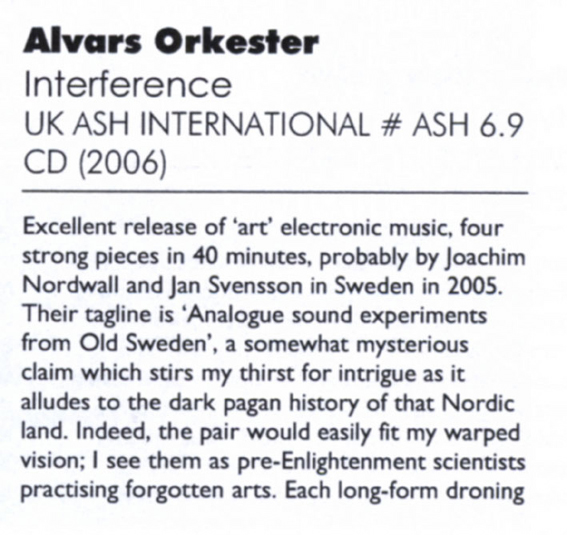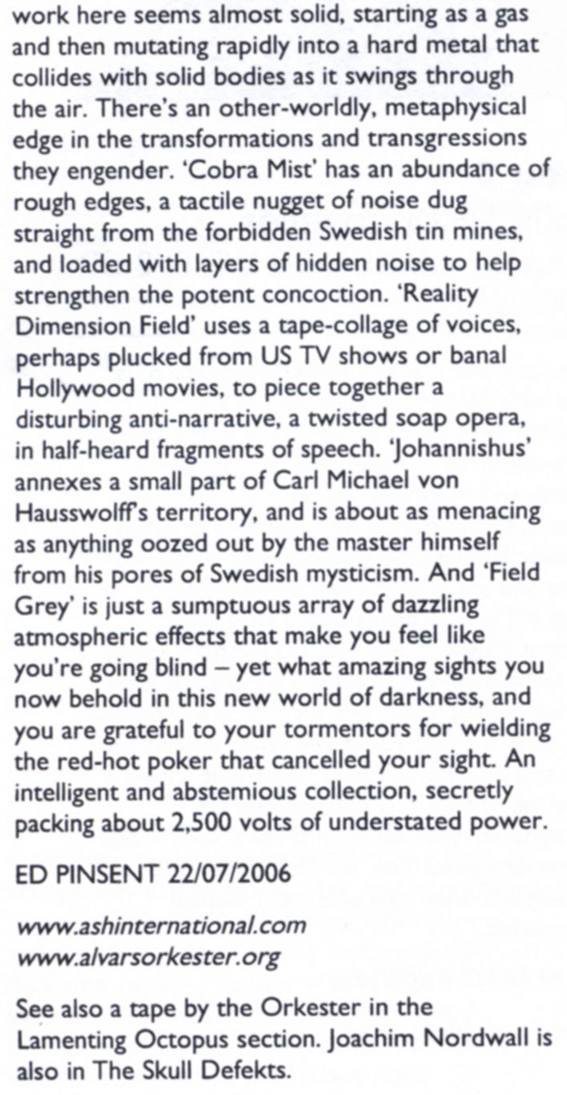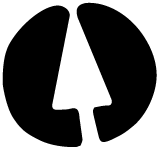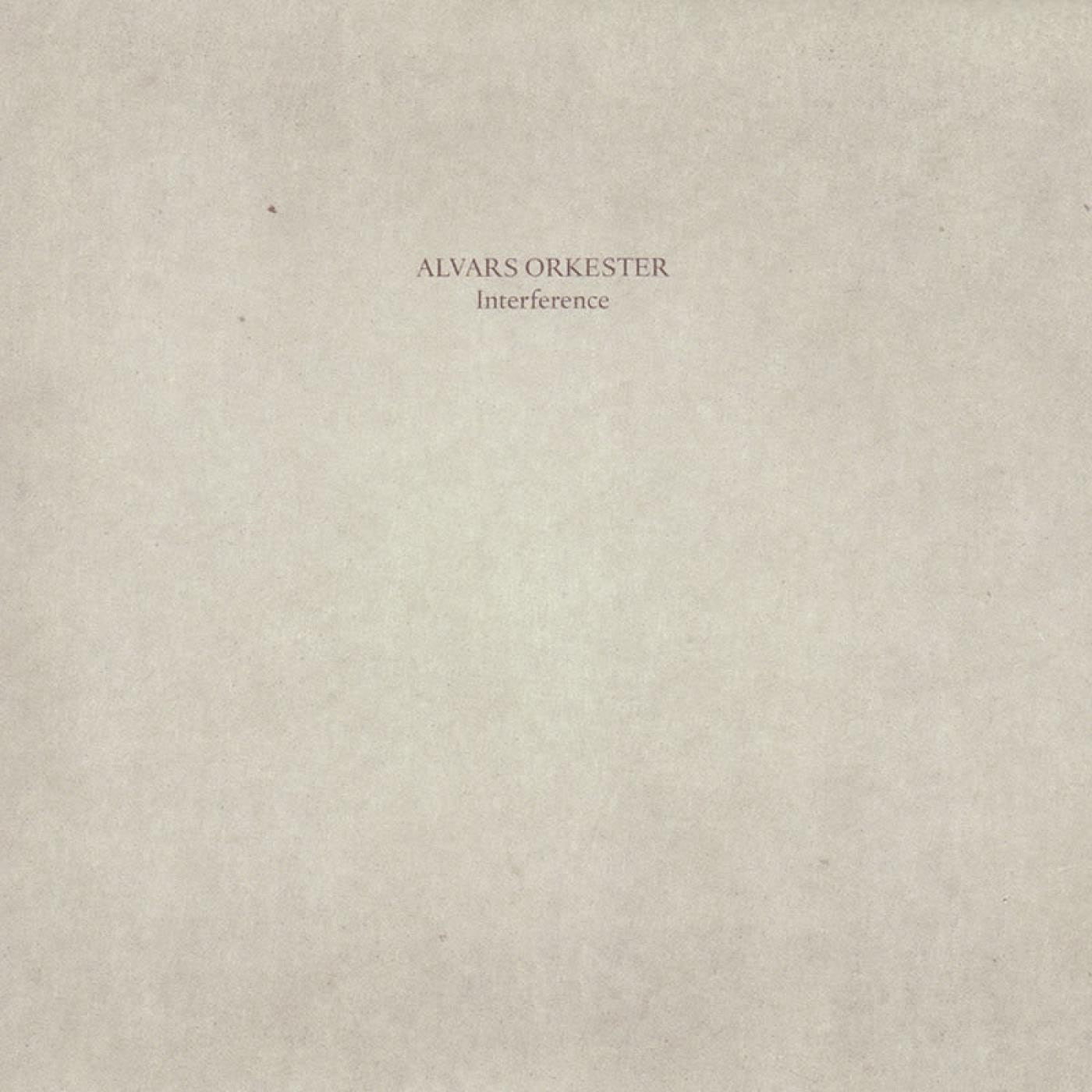CD, 4 tracks
6.02.06 Release date ::: Launch party ::: Ash 13 @ Fylkingen, Stockholm
1. Johannishus
2. Cobra Mist
3. Reality Distortion Field
4. Field Grey
Recorded in Studio Styrka, Karlskrona, Sweden April 2005
Controllers: Joachim Nordwall & Jan Svensson
Analogue sound experiments from old Sweden 1987-2006+
www.alvarsorkester.org
This album is the first release in what will be the 13th anniversary since the foundation of Ash International.
‘Interference’ by Alvars Orkester was edited by Mike Harding and Philip Marshall, who here also designs his first CD for the label. ‘Interference’ consists of analogue drones, interspersed with hardcore electronics, hair-raising voices and spine-chilling ambience.
Alvars Orkester, was formed in 1987 in Johannishus, a small village in the south-east of Sweden by a group of young boys interested in the mysteries of psychic sickness, mental institutions, the industrial music culture and the power of sound. For the first very creative years, Alvars was very active within the independent cassette culture scene releasing their stuff (that quite soon drifted from the industrialism inspired by Test Dept, TG, SPK and z’ev to an atmospheric, psychedelic and quite ambient version of noise) on small labels in Italy, Portugal, USA etc.
AO was always very closely connected to the Börft Records label, run by the two core members Jan Svensson and Joachim Nordwall. Börft was a label for weird electronic experiments, noise and industrial. In 1994, Nordwall left the label and Sweden (to return to the country forming the iDEAL Organisation but never to Börft and the south-east) and Svensson continued by focusing on bent acid house and dance stuff.
The psychedelic aspect of the music came in though an early interest in natural drugs and the need to investigate different ways of messing with the mind.
For years, AO remained silent with a few short exceptions, but in April 2005, Nordwall and Svensson recorded the ‘Interference’ album for Ash International. Coloured by Svensson’s increasing paranoia sickness and the tension between the two that have been there since their youth, they put down the aspects of the mysteries of psychic broadcasting and manipulation on tape.
Long sessions during the years in the mainly analogue Studio Styrka in Johannishus built up a huge archive of recordings, most unreleased to date but slowly being brought to light by labels like Kning Disk, RRR and White Tapes.
Reviews:
The Wire (UK):
Swedish noise combo Alvars Orkester were active in the 80s Industrial cassette underground. Interference marks the return of core members Jan Svensson and Joachim Nordwall after a long layoff. Inspired by faintly ghoulish interest in extreme mental states (both psychic and chemically induced), the duo present four highly involving pieces, some of which feature source material dating back to the group’s beginnings. Their approach switches between slowly evolving electronic dreamscapes (“Field Grey”) and noise constructions (“Cobra Mist”); “Reality Distortion Field”, the album’s highlight, pits feedback whine against processed and cut-up voices, occupying a space somewhere between the two poles. There’s a sense of careful retsraint about Interference, evincing a reluctance on the part of the duo to be drawn into making noise for noise’s sake. [Keith Moliné]
Other Music (USA):
Founded in 1987, Alvars Orkester (Swedish noise/drone chiefs Joachim Nordwall and Jan Svensson) have been active on and off ever since. Initially inspired by the power electronics and harsh industrialism of Test Dept, SPK and Throbbing Gristle, the two eventually moved towards a droney, more ambient, trance. After a 10 year hiatus, Nordwall and Svensson reunited for Interference, recorded in April 2005. Opener “Johannishus” massively builds for nine minutes before it collapses into a low bass tone and morphs into “Cobra Mist,” the only truly jarring wall of noise on the album, sitting nicely next to Merzbow or David Jackman’s more abrasive moments. “Reality Distortion Field” samples film dialogue over sine wave drones and spills into “Field Grey,” Interference’s atmospheric 19-minute closer, which subtly shifts to create a trance-like effect comparable to the works of Organum or Mirror. Beautiful and disconcerting all at once. [AK]
VITAL (The Netherlands):
The name Joachim Nordwall pops up more and more in Vital Weekly. Here as a member of Alvars Orkester, recently with the Skull-defekts and sometimes releases on his own Ideal Organisation label. The Alvers Orkester exists since 1987 when it was formed by Nordwall and Jan Svensson (among unnamed others), when they lived in Johannishus, south-east of Sweden and they had a cassette label called Börft. Back then they released a couple of things on small labels in Italy, Portugal, USA and sounded by like an ambient industrial band (moving away from the first line of inspirations such as Test Dept, Throbbing Gristle and SPK). The band was in active for a couple of years, when Nordwall wasn’t living in Sweden and Svensson moving to acid house. But they reformed and recorded this album in April 2005. These days they balance the lines between the strictest darker ambient corners and the highly aggressive noise version of music. The basic stuff of the four pieces here, selected by Ash-boss Mike Harding and Philip Marshal, were recorded between 1987-2005. Highly atmospheric in the opening piece ‘Johannishus’, going through a pretty mean noise slab of ‘Cobra Mist’. Although the noise of the Alvars Orkester is a controlled one. It doesn’t bounce into all sorts of directions, but works as a true wall of sound. Tape experiments with voices open up ‘Reality Distortion Field’, and feedback/sine wave like sounds drop in. The final piece, the longest, is ‘Field Grey’, and that is exactly what it is: a grey field of sound that is cut somewhat softer, but if you crank up the volume, all sorts of nasty frequencies become apparent in this piece. Quite an intense work altogether, that may also be somewhat of a surprise for the label-spotters out there. It moves into the field of drone/ambient/noise but picked out an interesting classic to explore the field with. Quite nice. [FdW]
Gonzo Circus (Belgium):
Na jaren van windstilte, de twee ‘Freq_Out’ compilaties moeten zowat het laatste wapenfeit van het label zijn, komt Ash International opnieuw aan de oppervlakte. Met de release van ‘Interference’ brengt Ash, een onderdeel van Touch, nieuw werk uit van Alvars Orkester. Het Zweedse combo debuteerde in 1987 en haalde hun inspiratie bij legendes als Test Dept, Z’Ev en de cassettecultuur. Het interesseveld van Alvars Orkester was groter dan de muziek, hun fascinatie voor psychiatrische ziektebeelden sluimerde duidelijk door in hun plaatwerk. Het handelsmerk van Alvaster Orkester is ook op ‘Interference’ een vakkundig opgetrokken wall of sound van analoge soundscapes, industriële noise en experimentele drones. De sterk ingehouden klank, de lang uitgesponnen nummers en in sobere vormgeving, een hoesontwerp van Philip Marshall, passen volledig binnen de huidige tijdsgeest en zorgt ervoor dat Jan Svensson, samen met Joachim Nordwall de spil van de groep, met ‘Interference’ aansluiting vinden het Southern Lord label, niet toevallig de thuisbasis van Thrones en Sunn O))). [Peter Deschamps]
Bad Alchemy (Germany):
ALVARS ORKESTER Interference (Ash International, # Ash 6.9): Diese ‚Analogue sound experiments from old Sweden 1987-2006+‘ lassen die Geschichte einer Clique von SPK- und Test-Department-Fans aufleben, die sich in Johannishus, einem Kaff in Südostschweden, um das von Jan Svensson & Joachim Nordwall gemachte Björft-Label geschart hatte. Der harte Industrial war bald dark ambienten und psychedelischen Neigungen gewichen, die zunehmend den Charakter der Soundproduktionen des Duos Svensson-Nordwall bestimmten. Das Orkester geriet ins Stottern, als Nordwall 1994 außer Landes ging. Nach seiner Rückkehr, wie es die kleine Welt will als Kopf von iDEAL in Gothenburg, dem Label, das die BA 50-7“ produzierte, kam es 2005 zu einer Wiederbelebung, auf die freilich Svenssons zunehmender Verfolgungswahn und interne Spannungen ihre Schatten geworfen haben. Dennoch sind vier neue Tracks entstanden, dröhnminimalistische Rauschzustände, in denen sich Erinnerungen an ‚Johannishus‘ in graue Nebel auflösen, wie sie die Titel ‚Cobra Mist‘, ‚Reality Distortion Field‘ und ‚Field Grey‘ andeuten. Stehende Drones aus motorischem Brummen, Tuckern und Sirren, orgelartige Haltetöne, Gitarrenverzerrungen und bebende Vibrationen rauschen ineinander. Vor dem inneren Auge beginnt ein grauer Vorhang sich zu kräuseln, ein granularer Sud zu sieden, pfeifendes Gebläse aufzufauchen, ein harscher Puls zu pochen, ohne dass die hermetische Undurchdringlichkeit ihr ‚Dahinter‘ preisgibt. ‚Reality Distortion Field‘ verstärkt die Irritation durch Stimmen, ominöse Filmdialoge und Telefonate. Danach wieder Grau in Grau, ein Zustand des katatonen Stupors, bei dem das Leben auf ein Grundrauschen reduziert ist und aus seiner Stagnation nur ganz allmählich sich löst, angestoßen durch ein perkussives Rumoren, das immer näher rückt, durch einen Vorhang gedämpft zwar, aber doch mit berserkerhaften Schlägen gegen Gongs und Blechwände. Am Ende bleibt nichts als ein Nachbeben, nichts als der zitternde Schleier selbst.
Westzeit (Germany):
Zum Glück machen die beiden Schweden Joachim Nordwall und Jan Svensson seit 1987 als Alvars Orkester zusammen Musik. Denn ohne diese Ausdrucksform wären sie entweder unberechenbare Terroristen oder hätten sich schon gegenseitig umgebracht. So können sie ihre Noise- und Industrial-Attacken dafür nutzen, mit eigenen offensichtlichen psychischen Krankheiten umzugehen und ihre spannungsreiche Beziehung zu bearbeiten. Wenn man nicht wüsste, wobei man hier zuhört, könnte man auch denken, Pan Sonic wären eingeschlafen und hätten das Band laufen lassen. ****/5 [Dennis Behle]
Fear Drop (France):
De ce duo suédois on apprend qu’il se passionne pour les maladies mentales et leurs mystères. On entend que la musique industrielle a fortement influencé leur pratique, et de telles conjonctions d’intérêts ne sont pas rares (Virgin Prunes, Psychic TV, SPK…). Encore faut-il sortir du sensationnel, préférer l’induction pour créer ou suggérer le trouble, bien plus efficace que le délire. Patiente, la musique d’Alvars Orkester est aussi très sombre, conçue en drones analogiques, en micro rotations, en flux synthétiques rapprochés et en échos de voix aveugles. Ce bloc musical est absolument cohérent, depuis ses plus linéaires propulsions de bourdonnements jusqu’aux déchirures métallisées. Le gris y domine, gouvernant le nuancier. Sombre et évocatrice, la musique sait rester réfrigérée. Dans son propos et dans sa réalisation, elle s’approche d’une version épurée de l’univers de Schloss Tegal, une horreur tissée, sans la moindre trace de narration. Ici, les bouches, les humeurs et les fracas se dessinent hors de l’organique, l’expression naît de l’interférence, une sortie du silence pour oser la métaphore nietzschéenne. Du splendide développement de drone gris sur la première plage, on retient un talent certain pour le développement d’ondes courroucées, une colère concrétisée dans les rugissements de Cobra mist, déferlement de noise analogique old school où la pulsation sort du magma, imperturbable, insensible à l’interférence. Ce jeu de submersion est-il un test de solidité pour les bases les plus stables de la réalité ? La troisième partie met celle-ci à mal, l’innervant après l’avoir brusquée. Voix empruntées et flux pulsatif hypnotique soutiennent les ascensions d’aigus, les effondrements vocaux. Malgré l’apparente fixité du fond, une nouvelle fois plus rien ne semble pouvoir résister à la corruption. La vie, le mot, modèles d’interférences et d’oxydation. Le minimalisme est ici sapé, malgré la prédilection qu’il impose à l’œuvre tout entière. Il perd un peu de sa rigueur pour voir s’agiter la matière rageuse que l’on a entendue sur différents fronts. Field grey, le morceau de conclusion, montre, magnifiques, les plages droniques de réverbérations métalliques après le festin de la rouille. Les strates exposent leurs creux, leurs morsures, leurs plaies difficilement cicatrisables, elles n’en sont que plus belles dans le reflet de leur propre crépuscule. [Denis Boyer]
The Sound Projector (UK):




